This article was written following the second annual Step Up Your Sound Game Jam, an Android mobile game jam where teams developed one-of-a-kind gaming experiences using Dolby Atmos with Wwise. This is a 5-part series; in this final blog, Megan Carnes, Cregg Hancock, and Zach Berglund of Fresh From The Coven Games dive into their game "Which is Witch?".

Hello, we’re Megan Carnes, Cregg Hancock, and Zach Berglund, also known as Fresh From The Coven Games. We’re very excited to tell you about the Dolby Atmos-powered mobile game we created for the 2023 Step Up Your Sound game jam, Which is Witch!
Available for download now:
A game of musical mischief
Which Is Witch starts off by placing the player, a renowned “witch hunter”, in a small village with the simple task of finding the witches hiding in disguise among the villagers. In an attempt to assist them in their search, the people throughout the village sing a protection hymn to ward off the witches. The witches try to counter this ward by singing incorrect versions of the song, and the player uses those wrong lyrics to help guide them to the witches.
The game begins with the player wandering around the town listening to the chipmunk-ified voices all around them until they find one that seems suspicious. The witch parts include things like booing and cackling, contrarian mocking, and malevolent anti-spells. The player can search for the villagers that they think may secretly be witches by comparing the singing of other villagers around them as well as paying attention to the subtitles in the user interface. The witches can be found anywhere on the ground or even in trees, so the player must listen diligently.

The hymn consists of a dulcimer and the villagers singing. All the hymn parts are spatialized and therefore output to the Atmos bus in Wwise. The villagers can sing soprano, alto, and bass parts. For the sake of keeping things easy for the player for this first level, the witches are sopranos only.
In order to have these villagers each singing from a different position, each one acts as an emitter. For the sake of simplicity, we had them all play the same switch container, with switches to determine whether each one is alto, soprano, or bass and whether they’re a witch.
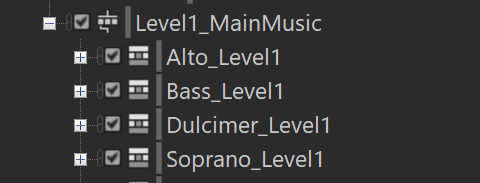
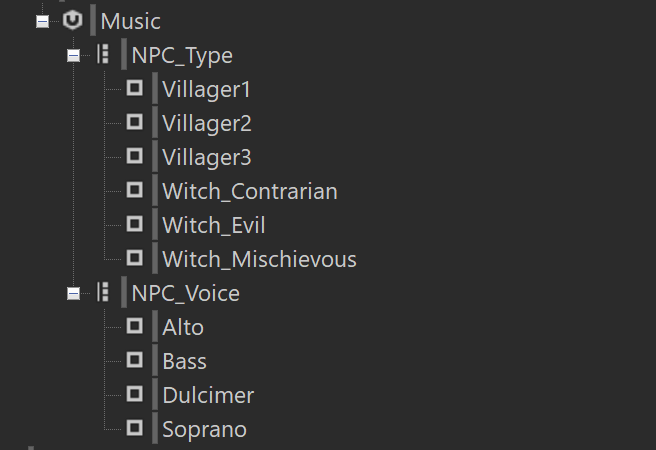
In order to help the player identify the witches, we made their vocals very unsubtle. They may cackle during pauses or sing wrong lyrics loudly and confidently. This way, the player might catch something being off even if the witch is further away, clueing the player into which direction they should go to check more closely.
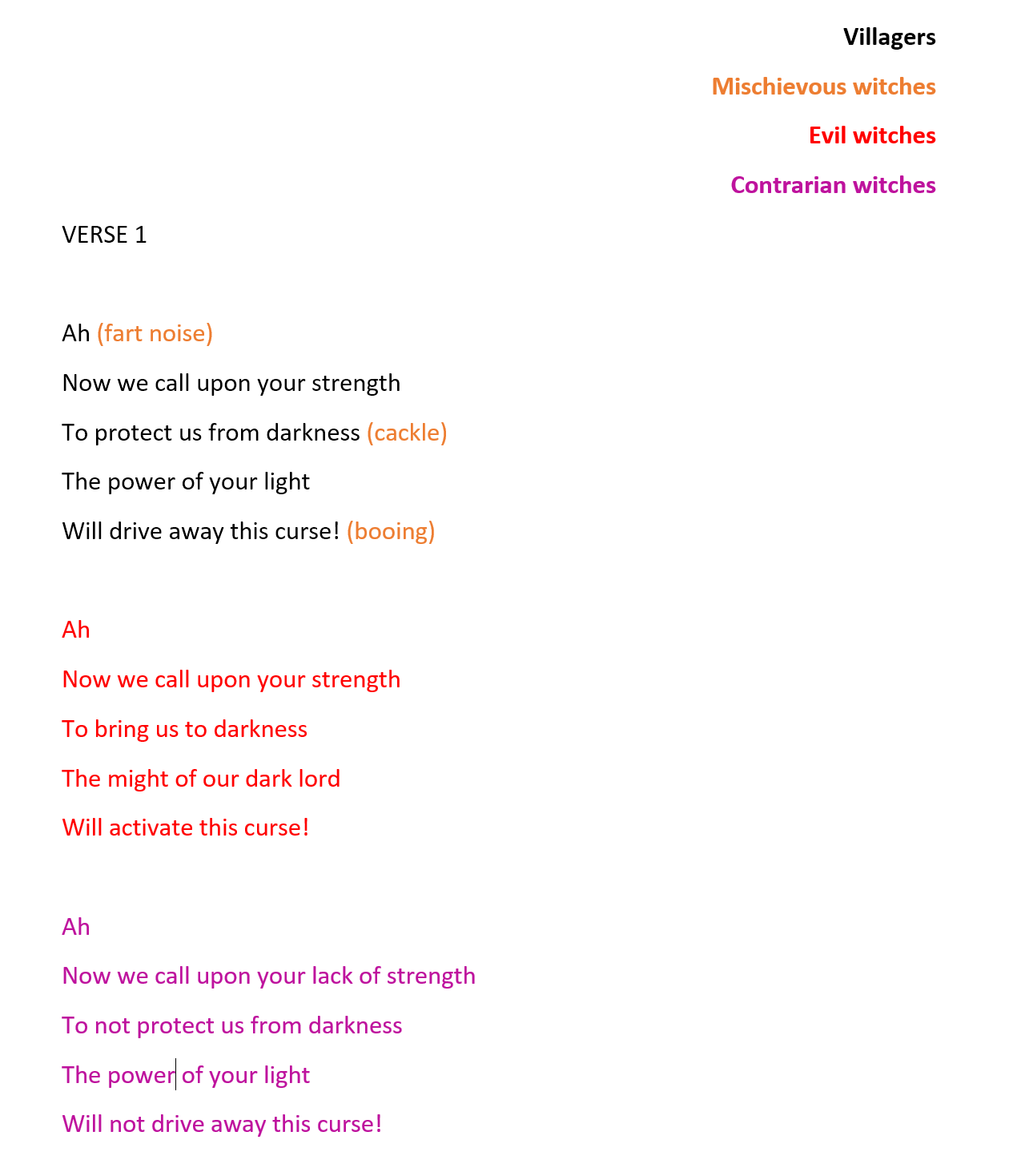
Existing in a 2.5d world
The art for the game is almost entirely public domain book illustrations and woodcut art spanning from being created in the 1500s to the 1800s. There is quite a lot of art about witches from that time, so it was a perfect fit. We knew we wanted to go with a 2.5d layout for the game to allow the player to navigate the 3d world and give them the full three dimensional experience of Dolby Atmos while still allowing us to use this fitting art style.
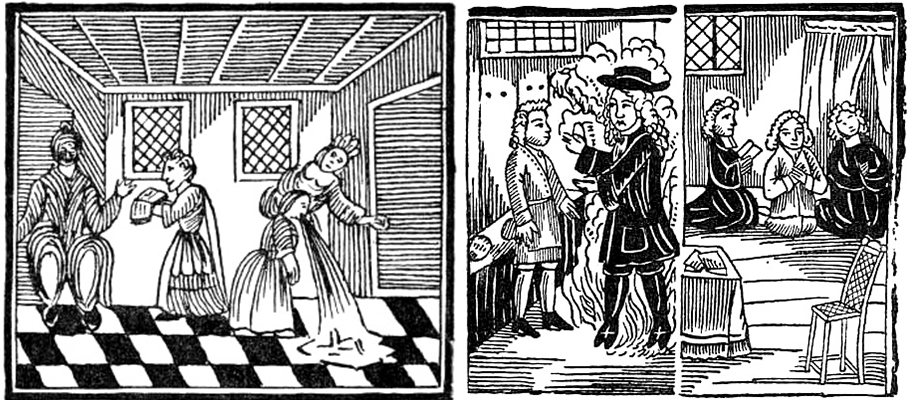
From The Devil In Britain and America by John Ashton (1896)
The map is statically placed along with the buildings within the village, but a major goal of this game was to have something that is replayable without expanding too much on the scope of what we could do at the time. So we didn’t want the entire world to be static. To solve this, we have every villager and witch spawn in with random looks and at random positions. Villagers can also be spawned randomly in trees that spawn in random locations, which has the fortunate addition of helping in utilizing the 3d space when it comes to height with Dolby Atmos to its full potential. The randomness of everything helps to keep every game feeling fresh, and leaves room for easily creating different scenarios in the future.
When it came to implementing the audio in these randomly generated 2.5d spaces, getting the distance attenuation right was absolutely crucial for the gameplay. There were a lot of factors to consider. We didn’t want the player to hear too many voices at once, which would make parsing out individual singers difficult. But we also wanted the player to get the musical experience of hearing the harmonies together and feeling like they really are in a village, surrounded by people singing.
We also wanted to make sure to make it very obvious what the villager you’re standing next to is singing by making their voice considerably louder than any of the others, but we also had to consider villagers up in trees, who are technically always a greater distance from the player than those on the ground. We wanted to make sure they could still be heard very clearly if the player was standing right under them.
So finally, considering all these factors and through a ton of trial and error, the attenuation ended up looking like this:
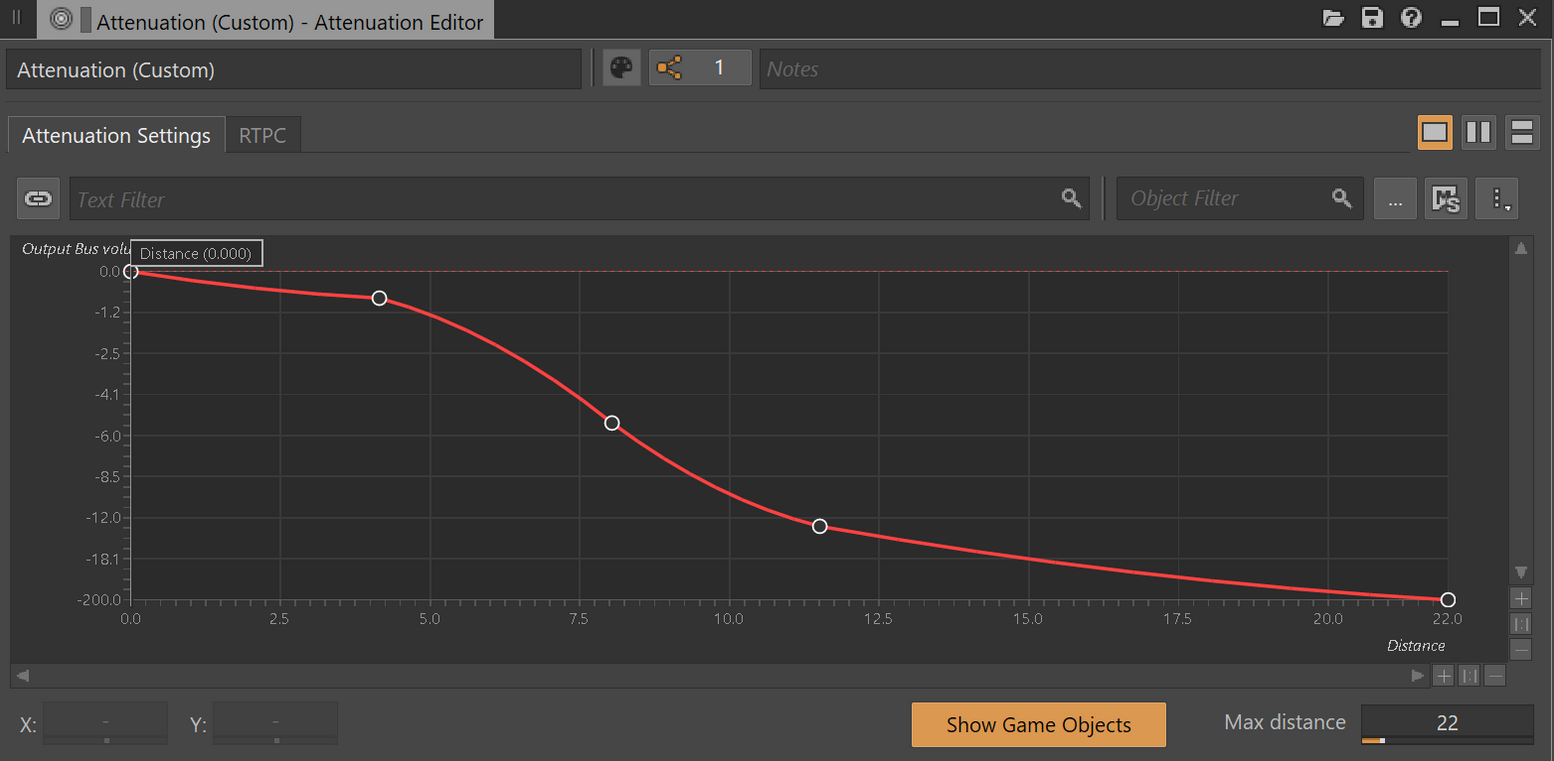
One additional note: we had a large map at first, with a good amount of space between the villagers. We ended up shrinking that to make things a bit easier on the player, because walking across the old version took too long. When we shrunk the map and ended up moving the villagers a bit closer together, we also changed the max distance from 30 to 22, because the villager voices were blending together too much otherwise. Basically, being adaptable and doing a lot of testing ended up being by far the most important factors in us being able to make the audio in this game work.



Comments